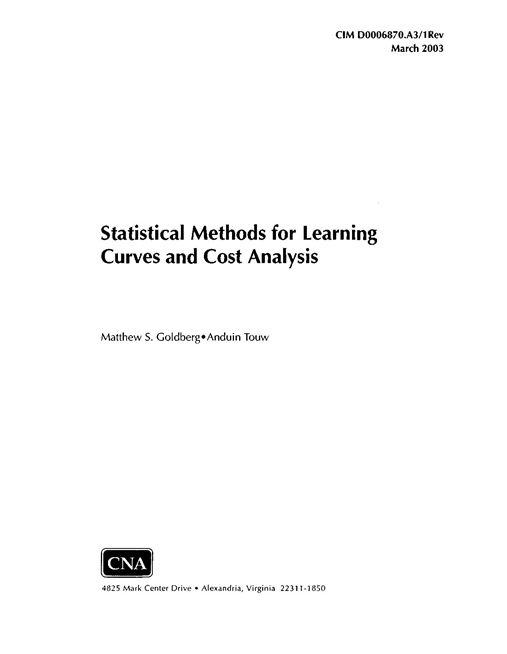In this chapter, we first discuss statistical methods for estimating '"cost progress" or "learning." We use these two terms interchangeably to describe a reduction in unit production cost as more items have been cumulatively produced over the course of a manufacturing program. Some older works defined the term ""learning" in a much narrower sense, to encompass only the reduction in manufacturing labor hours as workers learn to perform repetitive tasks faster or with fewer errors. Most modem authors have expanded the concept of "learning" to include redesign of the production process itself, perhaps changing the tasks that workers perform or complementing those workers with improved automation. In addition, as a production program unfolds, manufacturers may find cheaper suppliers, or enter into long-term contracts under which they enjoy quantity discounts from suppliers. We retain the older term. "learning" without much concern for whether the source of the unit cost reduction is confined to production workers performing repetitive tasks, or extends to some other economic or technological factors. We also use the term ""learning curve" to describe the mathematical relationship between unit production cost and the cumulative quantity produced.
Next, we turn our attention from the learning curve to the cost-estimating relationship (CER), a regression equation to predict the development or production cost of a system based on performance and technical characteristics such as weight, speed, and composite materials content. We define a class of statistical models known as multiplicative regression models. Many CERs, as well as a particular representation of the learning curve, fall into this class of models. We discuss two specialized statistical techniques for calibrating learning curves. We also discuss several general-purpose statistical techniques that apply to all multiplicative regression models, including CERs as well as learning curves.
We attempt to keep the level of mathematics to a minimum throughout this introductory chapter. Only a few of the equations we display should appear difficult to most readers, and these few we have simply copied into the current chapter without a full derivation. In subsequent chapters, we provide the derivations of the few difficult equations. Our intention is for the reader to grasp the major content of our work from the current chapter, and defer the more difficult mathematics until later.
Download reportCleared for public release. Distribution unlimited. Specific authority: N00014-00-D-0700.
Details
- Pages: 198
- Document Number: CIMD0006870.A3/1Rev
- Publication Date: 3/1/2003
